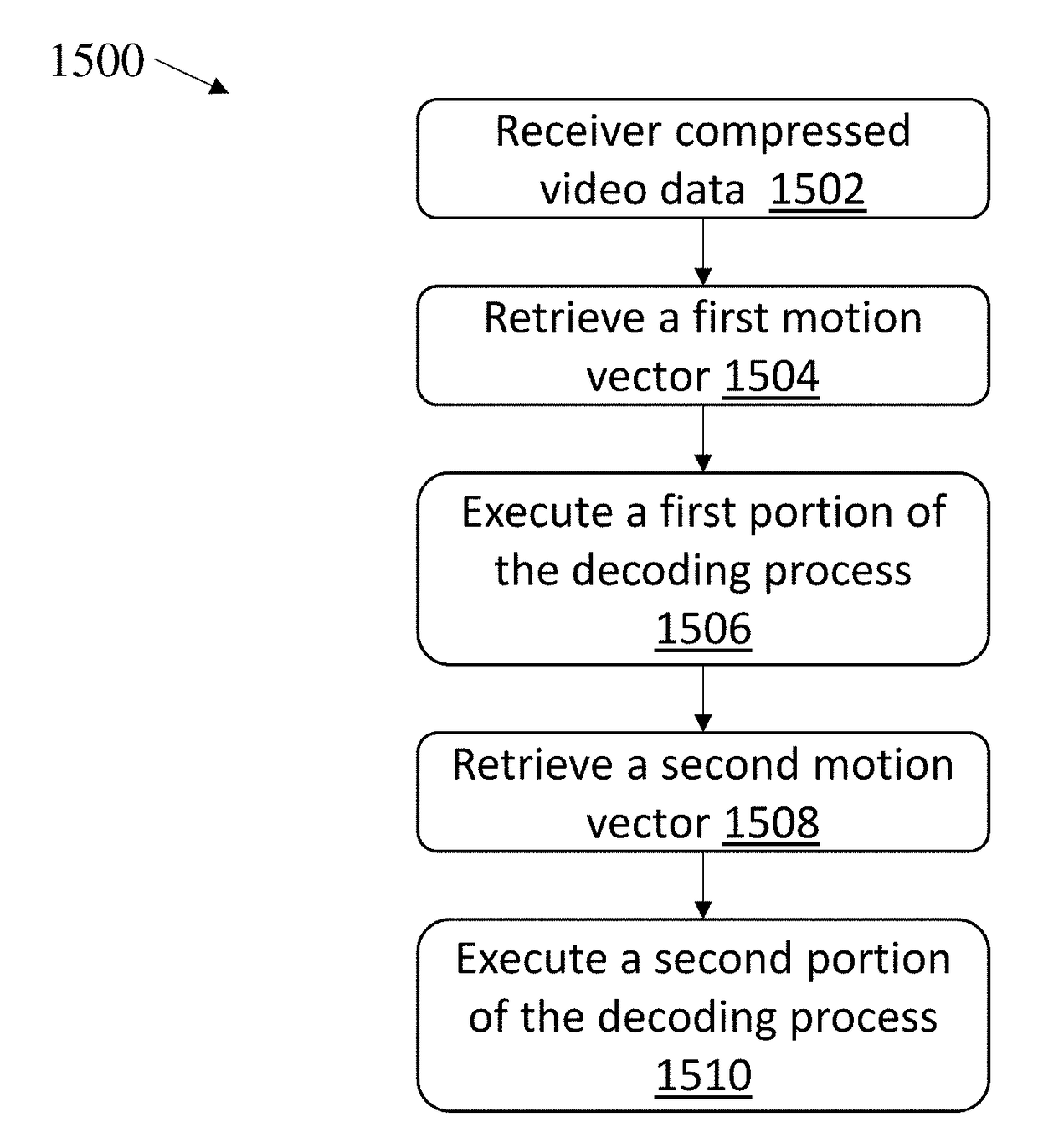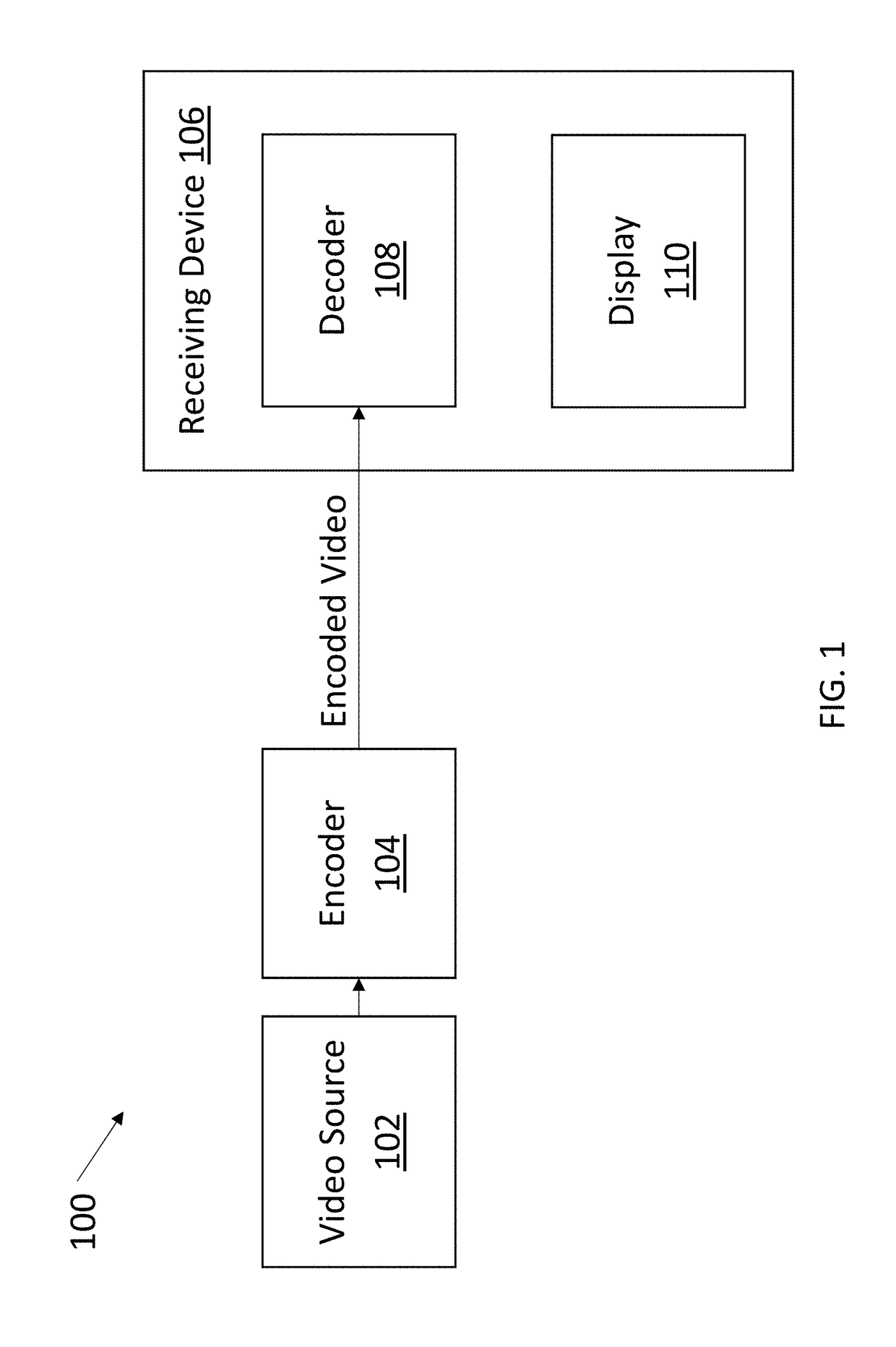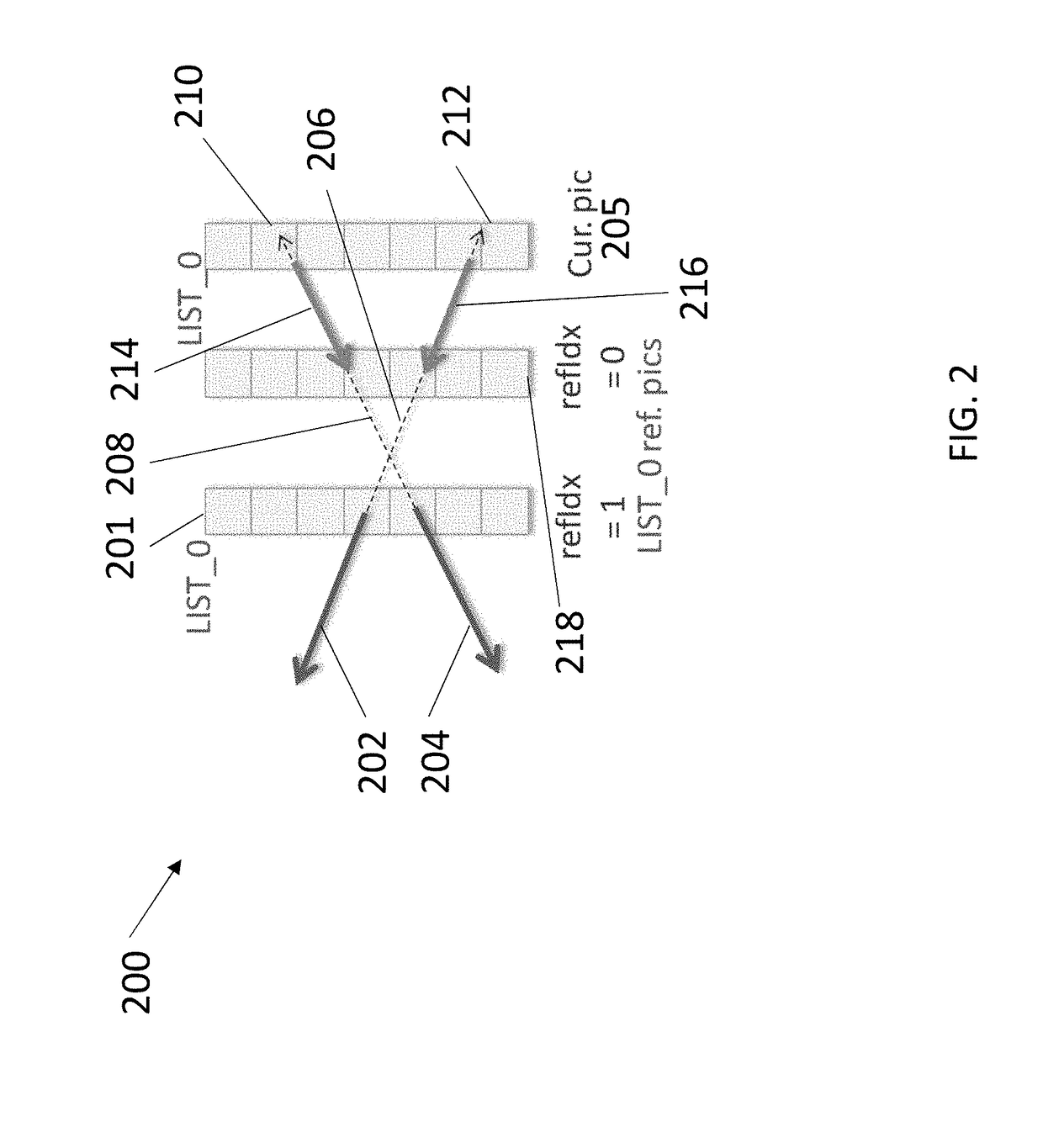Decoder-side motion vector restoration for video coding
a motion vector and video coding technology, applied in the field of video coding, can solve the problems that signal motion vectors can consume a significant amount of data, and achieve the effect of improving the execution speed and efficiency of decoder-side motion vector refinement techniques
- Summary
- Abstract
- Description
- Claims
- Application Information
AI Technical Summary
Benefits of technology
Problems solved by technology
Method used
Image
Examples
Embodiment Construction
[0053]The inventors have recognized and appreciated that various techniques can be used to improve the execution of decoder-side predictor refinement techniques, such as pattern-based motion vector derivation (PMVD), bi-directional optical flow (BIO), and decoder-side motion vector refinement (DMVR). Decoder-side predictor refinement tools can cause processing delays due to how the motion vectors (MVs) are computed and reconstructed. Techniques can be used to allow for similar execution timing as compared to the execution of traditional decoding methods that do not predict MVs (e.g., such as when the motion vector information is signaled from the encoder). For example, a decoding process can be adjusted so that the MVs can be reconstructed early in the process, thereby allowing the decoder to pre-fetch the requisite reference pixels in a manner that hides the latency cycles required to fetch the data. As an example of such techniques, the unrefined MV can be (a) restored back into t...
PUM
 Login to View More
Login to View More Abstract
Description
Claims
Application Information
 Login to View More
Login to View More - R&D
- Intellectual Property
- Life Sciences
- Materials
- Tech Scout
- Unparalleled Data Quality
- Higher Quality Content
- 60% Fewer Hallucinations
Browse by: Latest US Patents, China's latest patents, Technical Efficacy Thesaurus, Application Domain, Technology Topic, Popular Technical Reports.
© 2025 PatSnap. All rights reserved.Legal|Privacy policy|Modern Slavery Act Transparency Statement|Sitemap|About US| Contact US: help@patsnap.com



